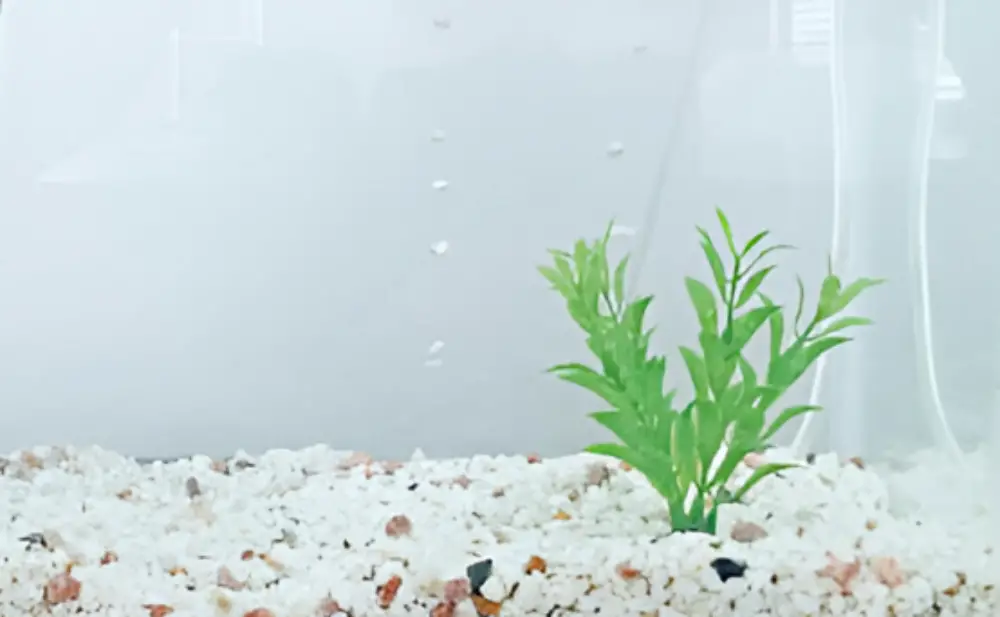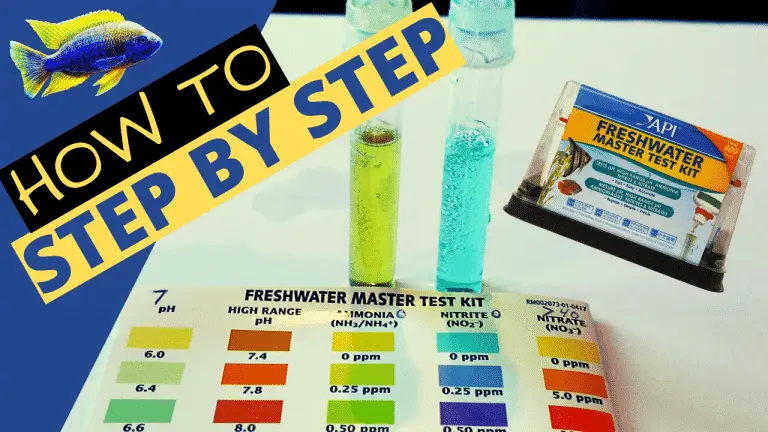What Is a Freshwater Refugium?
What? A freshwater refugium? You read correctly. Considering the popularity of refugia in saltwater aquariums, you might be wondering, “Would they work for freshwater aquariums?” While they may not be as popular on the freshwater side of things (yet), they do hold some value. Let’s chat about it.
What Is a Freshwater Refugium?
A freshwater refugium is a specific zone in or attached to a freshwater fish tank. Refugia help provide a safe environment for beneficial bacteria, live plants, and occasionally, delicate species of fish and invertebrates. It works in a similar way as a saltwater refugium, but it is designed specifically for a freshwater setting.
Types of Refugia
Here are different types of refugia — as well as their key features — that you can consider for your tank:
Sump refugium
- Installed beneath the main aquarium.
- Connected to the main tank via overflow or siphon.
- Provides ample space for additional filtration and refugium setup.
- Commonly used in larger setups where space permits.
Hang-on-back (HOB) refugium
- Attaches to the back of the main tank.
- Easy to install and maintain.
- Suitable for smaller aquariums or setups where a sump is not an option.
- Limited space compared to a sump refugium.

In-tank refugium
- A compartment within the main tank itself.
- Can be a separate chamber partitioned off from the main tank.
- Provides a more integrated and compact refugium option.
- Suitable for smaller setups or hobbyists who prefer a minimalist approach.
Dedicated refugium tank
- A separate tank connected to the main aquarium.
- Offers the most space and flexibility for refugium setup.
- Requires additional space and plumbing compared to other options.
- Ideal for hobbyists with larger aquariums or those aiming for maximum biodiversity.
Each type of refugium has its advantages and considerations, so choose the one that best fits your tank size, setup, and maintenance preferences.
Benefits of a Freshwater Refugium
So, should you even consider a refugium for your freshwater tank? Let’s help you by listing their key benefits.
1. Improves water quality
Freshwater refugia help keep your aquarium water clean. They do this by housing plants and beneficial bacteria that absorb and break down waste products like nitrates and phosphates.

2. Controls algae growth
Because refugia can house your plants and beneficial bacteria, they can thus help with algae prevention. How? The “good” plants and bacteria in the refugium use up nutrients that would otherwise feed the bad algae in your main tank.
3. Provides a safe space
A refugium provides a safe spot for baby fish, shrimp, and other delicate species. These tiny inhabitants could be devoured or outcompeted for food in the main tank, but in a refugium, they can survive and thrive in safety. That’s basically two benefits in one!
How Does a Refugium Work?
Here’s a simple breakdown of how a typical refugium works — mechanically.
1. Setup and placement
A refugium can be either of the following:
- A separate tank,
- A compartment within an aquarium, or
- A specially designed area that hangs on the back or side of the main tank.
Its placement and the way it is integrated into the main aquarium system are crucial for its functionality.
2. Water flow
Water from the main tank is typically pumped into the refugium and then flows back into the main tank. You can achieve this by either using the following:
- Pumps: Pumps move water from the main tank into the refugium. The pump’s flow rate should be enough that water circulates through the refugium without being too turbulent.
- Overflow boxes: In some setups, water flows into the refugium via gravity through an overflow box. It is then pumped back into the main tank.
3. Filtration and nutrient absorption
There are a few elements within the refugium that also play a role in how it works. Let’s discuss them:
- Substrate: Substrate can help support plant life. It also provides a surface area for beneficial bacteria to colonize.
- Macroalgae and plants: These are key elements. They absorb nutrients like nitrates and phosphates from the water. This process helps control algae growth in the main tank and improves water quality.
- Micro fauna: The refugium is also a breeding ground for beneficial microorganisms, such as copepods and amphipods. They can be a natural food source for your fish in the main tank. That’s a nice bonus!
4. Lighting
Specific lighting is used to support the growth of plants and algae within the refugium. This lighting is typically on a different schedule from the main tank to help stabilize pH levels over a 24-hour period (light encourages photosynthesis, which consumes CO2 and releases oxygen, impacting pH).
5. Return to main aquarium
Finally, the water — that is now cleaner and richer in oxygen and beneficial nutrients — returns to the main tank. This can be through a gravity-fed overflow or a return pump, depending on the setup.
How to Set Up a Freshwater Refugium
Did you just get your very own refugium, but are unsure on how to set it up?
Follow along on how we set up our freshwater HOB refugium from AquaReady:
Alternatively, here’s a simple step-by-step process:
Step 1: Choose the type and location of refugium
Decide whether you want a separate tank, a compartment within your main aquarium, or a HOB refugium. Once you’ve decided, choose its location. Ensure this location has enough space and access to plumbing if needed.
Step 2: Gather equipment and materials
Here’s a little is of the things you might need during setup:
- Refugium tank or compartment
- Substrate (sand, gravel, or specialized refugium substrate)
- Live plants or macroalgae suitable for freshwater refugia (e.g., Java moss, Anubias, Hornwort)
- Lighting appropriate for plant growth
- Water pump or overflow box for water circulation
- Heater (if needed to maintain temperature)
Step 3: Prepare the refugium
First, ensure you rinse your substrate thoroughly to remove any debris or dust. Next, you can carefully add the substrate to the refugium. Ensure you throw enough in for the plants to take root. Finally, plant the live plants or place macroalgae in the refugium, spreading them out to maximize coverage.
Step 4: Install lighting
Position the lighting fixture above the refugium. Make sure the light’s placement provides the right spectrum and intensity for plant growth. Next, set up a timer to simulate day and night cycles for the refugium.
Step 5: Set up water circulation
If using a separate tank, connect the refugium to the main tank’s filtration system using plumbing or hoses. Install a water pump to circulate water from the main tank into the refugium and back. Just make sure the flow rate is suitable for the size of the refugium.
Step 6: Acclimate micro fauna (optional)
If you’re adding small fish and invertebrates, now is the time. Allow some time for them to get familiar with their new home and multiply.
Step 7: Monitor and adjust
Monitor water parameters in the refugium, including temperature, pH, ammonia, nitrite, and nitrate levels. Depending on these parameters, adjust its lighting, water flow, and heating as needed.
Step 8: Integrate with main tank
Once the refugium is established and stable, gradually introduce it into your main aquarium system. Always monitor your main tank’s water parameters to make sure the refugium is actually contributing to its water quality.
Do YOU Need a Refugium?
With all said and done, do you need a refugium for your freshwater tank? To help you make a decision, ask yourself the following questions:
- Why do I want a refugium?
- Do I have enough space?
- What are my goals for my main tank?
- Am I willing to invest time and effort in maintenance?
- Do I have the necessary equipment and resources?
- Will adding a refugium disrupt the existing aquatic environment?
- What type of refugium would best suit my needs?
- How will I integrate the refugium with my existing aquarium system?
- What impact will a refugium have on water parameters?
- Am I prepared to troubleshoot and address potential challenges?
Based on your answers, you’ll be able to come to a conclusion on whether a refugium is worth it for you and your tank.
Share Us With Your Thoughts!
Considering all you now know about freshwater refugia, what do you think? Would you install a refugium into your tank setup? Share your thoughts or experience with like-minded people. Feel free to join KaveMan Aquatics’ Facebook group or Discord server.

If you’re passionate about taking your fishkeeping hobby and want to take it to the next level, look no further! Our Aquabuildr app can help make building and maintaining your aquarium as effortless as ever.
Download Aquabuildr for FREE on the Google Play Store or Apple’s App Store today and feel the power of smart fish-keeping!
-
What Is a Freshwater Refugium?
What? A freshwater refugium? Explore the benefits of having a freshwater refugium. Be sure to share your thoughts with us. Join our community!







